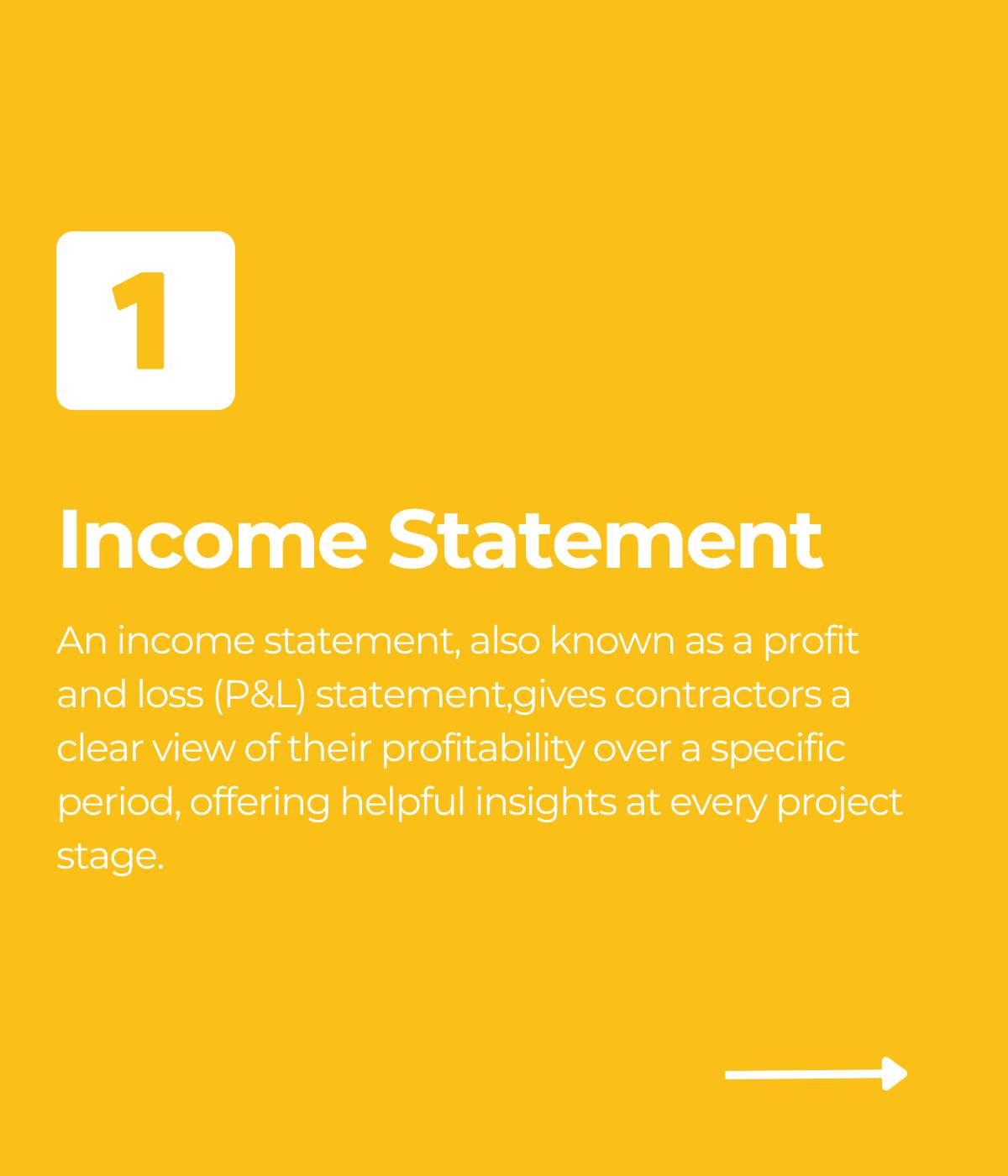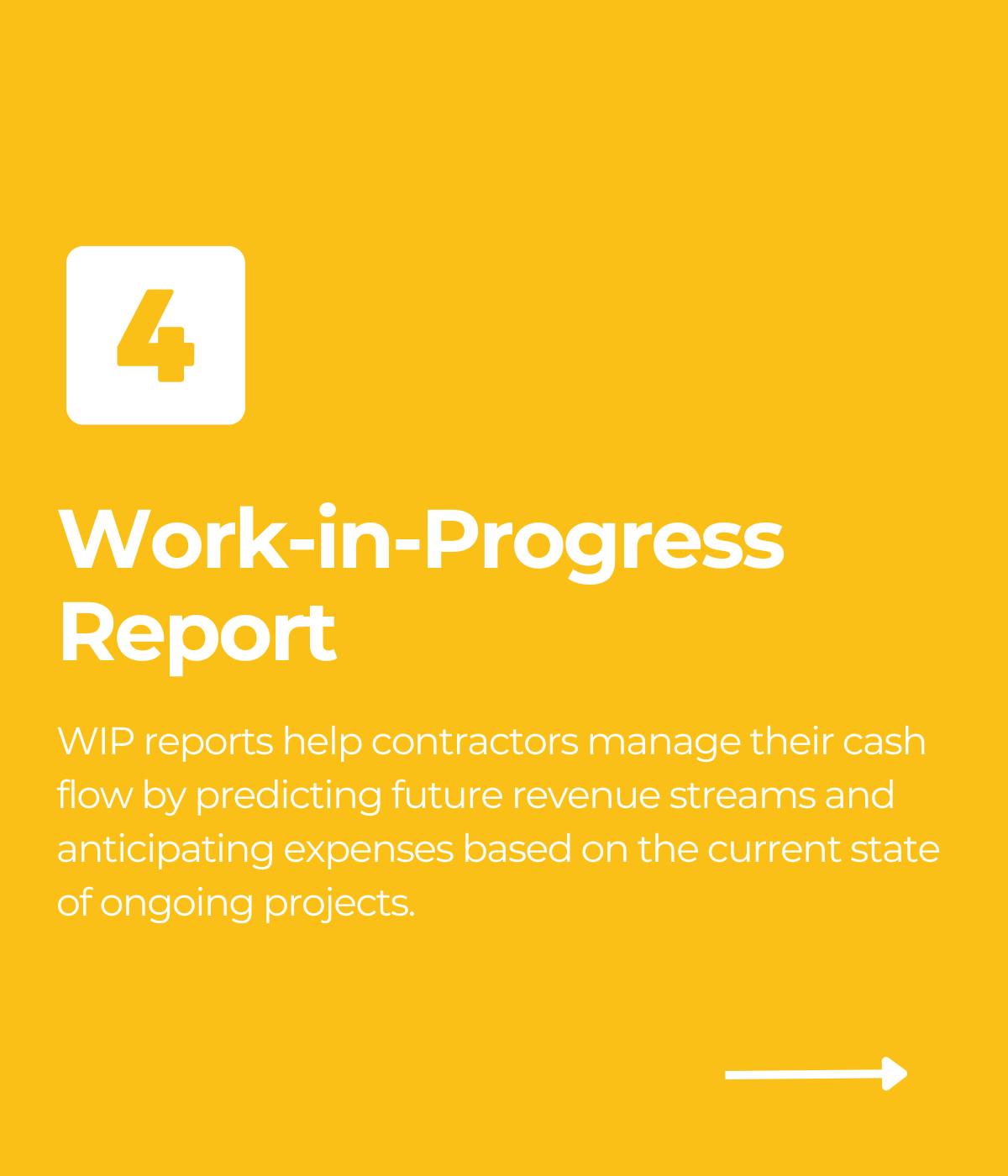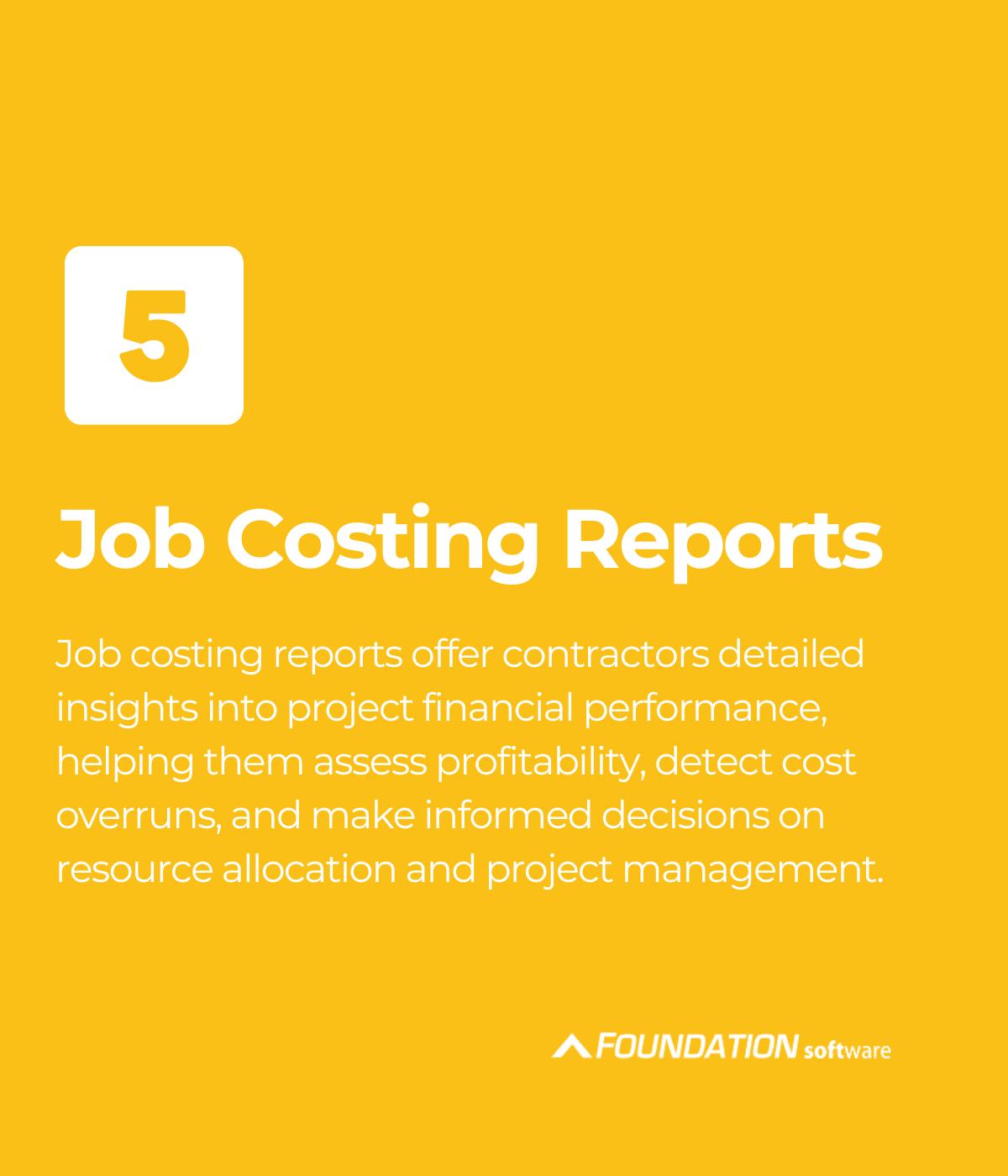
Construction reports are the financial backbone of a contractor’s business. Contractors leverage these reports to make decisions that are critical to their success.
These reports also provide transparency for internal and external stakeholders about project performance, costs and revenue.
It’s important contractors understand the most common financial reports, their purpose and how to accurately compile data within them.
With that in mind, here are the top five financial reports you should be using.
Key Takeaways
- Income statements give contractors a basic understanding of their net profit or loss for a high-level financial overview of their operations.
- Cash flow statements allow contractors to see exactly how much money they are earning, how much they are spending and what they are spending it on.
- Contractors can use WIP reports to determine the state of ongoing projects.
- Job costing reports help contractors determine material and labor costs for each project.
- Construction accounting software — like FOUNDATION® — automate report gathering and allow contractors to easily access them in real-time.
Income Statement
An income statement, also known as a profit and loss (P&L) statement, reports a contractor’s profit or losses over a specific period.
The P&L statement provides contractors with a basic understanding of their profitability.
Income statements are calculated using this simple formula: Income – Expenses = Net Profit (Loss).
If income exceeds expenses, the contractor is profiting. However, if the opposite is true that means they’re operating at a loss.
For example, let’s say a contractor recently purchased a new piece of equipment and hired new employees, if those expenses exceeded the amount they earned over a specific period, they are operating at a loss.
Income statements by themselves have limitations because they recognize revenue during the billing stage not when it’s actually collected.
This could lead to a contractor misinterpreting their cash flow because they are basing calculations off expected revenue instead of funds they’ve collected from clients.
When used with other reports mentioned on this list, income statements offer basic, helpful insights into a contractor’s profitability at every step of their projects.
Balance Sheet
The balance sheet measures a contractor’s resources that have value (assets), resources owed (liabilities) and shareholder resources (equity) over a specified period.
Generally, an easy way to think about balance sheets is that Assets = Liabilities + Equity.
Contractors can also leverage their balance sheet to determine their company’s worth at any given time.
This can be used to strategically plan payments, loans and collections to maximize their company’s value.
For example, contractors can use their balance sheet to determine the best time to hire more employees or purchase new equipment.
Balance sheets are great for contractors who are seeking big-picture financial insights about their company.
Cash Flow Statement
Cash flow statements give contractors added visibility into non-cash assets — like receivables and inventory — and non-cash liabilities — like accruals.
With cash flow statements, contractors can see available cash and identify exactly where it’s going.
Cash flow statements give contractors the ability to precisely measure where and when:
- Funds are coming in
- Funds are being directed elsewhere
If the funds coming in are greater than the funds going out, the contractor has positive cash flow. If the opposite is true, they have negative cash flow.
Cash flow statements provide contractors with valuable information.
For example, they can leverage cash flow statements to identify slow payments from clients and put necessary measures in place to solve the issue.
Savy contractors who seek assistance from a construction CPA, can harness cash flow statements to project future cash flow as well as the long-term financial health of their entire business.
Work-in-Progress Report
Work-in-Progress (WIP) reports are used to identify when a contractor is overbilled or underbilled.
When a project is overbilled, that means the billing is more than the cost — so the client is paying for the project — whereas underbilling means the cost exceeds the amount being billed—meaning the contractor is paying for the project.
WIP reports help contractors identify when they’re in the red so they can quickly adjust their approach to maximize profitability moving forward.
WIP reports include information like:
- Contract amount
- Percent complete
- Costs to date
- Earned revenue
- Billed revenue
WIP reports help contractors manage their cash flow by predicting future revenue streams and anticipating expenses based on the current state of ongoing projects.
This provides contractors with the foresight to ensure they have sufficient funds to meet their immediate needs while keeping the needs of their entire operation in mind.
For example, a contractor refers to their WIP report to determine the status of a project and realizes its currently projected to go over budget. Construction owners can then immediately implement money saving strategies without having to wait for additional costly overruns to occur.
Internal and external stakeholders also use WIP reports to determine a contractor’s financial stability and performance.
A contractor’s WIP reports could be a deciding factor when seeking outside investments or construction bonds.
Job Costing Reports
Job costing reports play a crucial role in construction contracting by providing in-depth insight into the financial performance of each project.
These reports break down costs associated:
- Labor
- Materials
- Equipment usage
- Subcontractor expenses
By tracking these costs and comparing them with budgeted estimates, contractors can assess project profitability in real time and identify potential cost overruns.
This level of detail allows contractors to make more informed decisions about resource allocation and project management — maximizing profitability and minimizing financial risks.
The detailed data from job costing reports also facilitates accurate billing and invoicing for labor and material costs.
Additionally, it provides valuable historical data that contractors can use when planning future projects.
For example, if a contractor is working on multiple bridge replacement projects within the same area over a short period of time, they can use their job costing reports to precisely measure the expected costs and revenue associated with each project.
Streamline Construction Reports with Construction Accounting Software
Contractors who are looking to gather accurate data fast should invest in a construction accounting software. With this software contractors can:
- Automate data entry
- Track key performance indicators
- Easily build, store and review income statements, balance sheets, cash flow statements, WIP reports and job costing reports
Some construction accounting software — like FOUNDATION — can integrate with project management software to give contractors even more control and visibility over each step of their projects.
Contractors can leverage this integration to monitor project profitability, analyze cost trends, adjust budgets and quick allocate resources to accommodate project needs in real time.
Income statements, balance sheets, cash flow statements, WIP reports and job costing reports are used to determine the financial health of a contractor’s company.
The accuracy of this data is pivotal to a contractor’s long-term success, and contractors can improve the quality of their data by investing in tools like construction accounting software.
FOUNDATION construction accounting software allows contractors to automatically generate accurate income statements, balance sheets, cash flow statements, WIP reports and job costing reports.
Users can easily review this information and see real-time updates to always stay ahead of cost overruns and delays.
Chat with a specialist today to learn more about FOUNDATION.
Share Article
Keep on current news in the construction industry. Subscribe to free eNews!
Our Top 3 YouTube Videos
Learn about our software more in depth with product overviews, demos, and much more!

Our ACA reporting & e-filing services include official 1094-C and 1095-C IRS reporting, optional e-filing (no applying for a TCC code required), mailing to your employees and experienced support to help you.

There are plenty of reasons to make FOUNDATION your choice for job cost accounting and construction management software — just ask our clients!

From job cost accounting software, to construction-specific payroll. Get an overview on your next all-in-one back-office solution.











